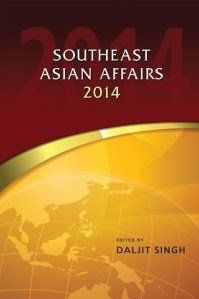In the latest volume of the seminal serial publication entitled “Southeast Asian Affairs” issued by Institute of Southeast Asian Studies, the editors and authors toSoutheast Asian Affairs 2014 give a detailed account of the salient dynamics in Southeast Asia, that is, internal violence (i.e., terrorism and insurgencies), domestic political turbulence (i.e., street demonstrations, and corruption), external major powers’ engagement, and Southeast Asian states’ achievements in good governance.
First of all, the religiously-inspired violence between Buddhists and Muslims continued to brew, and remain an essential challenge in Southeast Asia, especially Thailand and Myanmar. In the case of Thailand, there are divisions among the insurgents, and many insurgents “reject any compromise such as autonomy under the Thailand constitution” (p.320). Moreover, the conflicts between Christian and Muslim communities in Indonesia have become more evident than ever.
The conflicting parties have different expectations, though dialogue processes have been initiated, and most stakeholders acknowledge that long-lasting conflicts will not be in interest of either party. In Sidney Jones and Solahudin’s opinion, although many terrorists do not seek independence, it does not exclude the possibility that Southeast Asian terrorists will take more active part in a global jihad in the future. Because there are three potential motives: “anger over deaths of suspects in police operations”, “release prison of convicted extremists”, and “the return of Indonesian fighters from Syria” (p.139).
Second, several Southeast Asian states are still under pressure for street demonstrations, while facing the critical challenges in domestic politics, particularly “alternative political centres of power”, and political grass-root campaigns (p.11). In Myanmar, “over 70 per cent of households do not have access to electricity“, and many of this country’s roads are ”unusable during the long monsoon season“ (p.226). For the majority of the population, re-construction of domestic order depends on “independent, functioning judiciary, culture of impunity, and general elusiveness of the rule of law” (p.109).
Third, historically, if a total war breaks out in the Asia-Pacific, Southeast Asian states will “in any case be drawn in irrespective of their closeness or distance to the particular major powers” (p.x). At present, the external major powers’ engagements in Southeast Asia do not come up to expectations. For instance, China’s influence on the China-Myanmar border continues to play a constructive role in the reconciliation process of Myanmar. The European Union’s involvement in Myanmar’s reconciliation was highlighted by the establishment of the National Crisis Response Centre and the Myanmar Peace Center. At the regional level, the tension in the South China Sea is at a historic rising. However, as Southeast Asian states’ top economic partners, China and the US have been avoiding confrontations and accommodating “each other’s bottom line interests” in Southeast Asia (p.82), as long as the US thinks it is possible to influence China’s rise.
In fact, most land grabbing cases have a lot to do with foreign INVESTMENT. Due to the rising demand for agro-industrial (e.g., rubber) and dam projects INVESTED by major powers, which brought in much needed revenues for the states in this region, “rampant land grabbing and forced evictions continue to dislocate communities” (p.103). To some degree, foreign INVESTMENT and political connected interest groups have threatened the displaced communities’ economic interests, but also destroyed their way of life. It’s not surprising that many demonstrations erupted over agro-industrial and dam projects. In Vietnam, the Prime Minister came under attack for “rampant corruption in state conglomerates and state enterprises” (p.366). In such a context, foreign INVESTMENT could be regarded as pressure from great powers, even a venue for conflict. As Nicolas Farrelly suggests, the importance of internal stability in Southeast Asian states would stand out, when pressures from great powers increase.
Fourth, the contributors are divided on how Southeast Asian states will respond to the salient dynamics in Southeast Asia. Some contributors argue that the solutions for these issues should prioritize public-private partnership, which covers all stakeholders inside and outside Southeast Asia. As Nick J. Freeman highlights, it’s urgently needed to regard crony elites, patronage networks, and Myanmar-born people living abroad as potential partners of public-private partnership. It’s worth noting that the Burmese diaspora that have skills and experience in more developed states could “prove particularly useful” (p.235).
Some contributors address that painful restructures and adjustments are indispensable for the long-term health of good governance. With regard to limited strategic resources in Southeast Asia, as Abdillah Noh believes, the governments would probably adopt short-term policies, rather than “adopting much needed more strategic outlook” (p.199), that is, establishing confidence-building mechanisms.
In Myanmar, the ethnic-based militias have been fighting against the Myanmar Army, when the Myanmar government appointed various committees to re-examine illegal issues (e.g., land grabbing and corruption), and amended some laws and regulations (e.g., Human Rights Commission Bill). Some militias do have “adaptability and capacity to stage damaging, coordinated attacks across–and beyond–the conflict zone”, such as attacks involving improvised explosive devise (p.320). In Brunei, the Sultan introduced an Islamic Sharia penal code in stages from April 2014, which replaces the former criminal code, and imposes harsh penalties for adultery, theft, homosexuality, and abortion.
In short, Southeast Asian Affairs 2014 succeeds in investigating and exploring the most important components in a larger set of variables in Southeast Asia. For academics, students and general readers interested in Southeast Asia, this volume would be a good start.
Suggested citation:
Kai Chen (2015), Review of “Southeast Asian Affairs 2014”, by Daljit Singh (ed.), East Asian Integration Studies, Vol. 8, no. 2.



